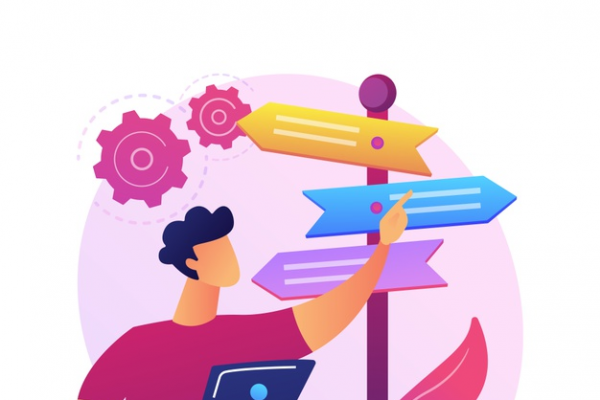Many employees don’t wish to leave their organisations; they hope to be better utilised.
“Remember that internal talent mobility and external talent acquisition are essentially two sides of the same coin.” — Josh Bersin
Technology, hybrid work models, the gig economy, and internal talent mobility have seen humongous rank-raise and uncovered a pre-eminent place in the leadership to-do/focus list. Organisations that prioritise these four pillars and their employees’ holistic wellbeing will be better positioned to survive, sustain, and thrive during and after the pandemic.
The global labour market and recruitment landscape are rapidly evolving due to the pandemic and subsequent economic downturn. There appears to be no strategic stopping point in the need for change and continuous adaptation. Organisations that restructured and redefined their hiring strategies in 2020 are now back at level one as a result of the second wave of COVID-19.
Although it is imperative to employ foreign talent, many businesses overlook and underestimate their most promising in-house talent pool, resulting in an instinctive miss on the untapped talent available within their own walls. There is no single equation that can define the % of internal talent mobility vs. external talent acquisition. The mix will differ for each organisation; the strategy formulation has to be as per the nature and need of the business.
Numbers Tell Us All
Gartner’s research on human resource goals reveals that over the next 2–3 years:
• 90% of the population will need to learn new skills within their current roles.
• 83% of companies will create new roles.
• 79% of companies will retire roles.
• 44% of the organisations plan to restructure.
The top two predicted goals for human resources in 2021 are:
• Develop critical skills and competencies (68%)
• Redesign organisations and navigate change (46%)
The new normal marked for today will contain little relevance in the next few years. Can we restructure the entire system? Can we aimlessly keep hiring to meet new requirements? No! The answer is we upskill, cross-train, and upgrade by building an internal talent pool that is more diverse and relevant, close to the plug-and-play model.
Challenges with Internal Mobility
Recent research indicates that most employees don’t wish to leave their current company; they hope to be better utilised. Organisations realise the importance of having this strategy in place, but there are a few perceptive hurdles that they sometimes find challenging to overcome:
• Culture: Hiring itself comes with the connotation that the company is recruiting. The organisation’s core culture becomes a bottleneck in restructuring the primitive conventional policies around development and mobility.
• Mentors: Managers are preoccupied with the makeup of their staff and the mission at hand. There is an element of discomfort in releasing a well-placed talent for a more suitable position. The priority is restricted primarily to the scope of work/project, which hinders the required internal mobility.
• HR Presumption: Human resources is not aptly equipped and guided to accommodate the versatility in employees’ talent. Teams believe that a candidate is hired because the individual qualifies for a specific position. After a fair investment, why transfer that asset to another role and re-cycle the whole process? The current approach is that talent is best hired for a JD; with a change in a JD, it is easier to hire an apt and ready resource from the market than to disturb the internal structure.
• Pre-defined Employee Life Cycle: Promotion is vertical for the tremendous and exceptional work a resource does in the same vertical. The preconceived notion is that expansion to exposure means distraction, which results in corporate stagnation.
Rewards of Internal Mobility
Companies have grown exponentially by understanding the magic and drinking the elixir that helped them appreciate the process by overcoming the hurdles and restructuring the entire system of internal talent mobility. We can understand this by observing the notable case of LinkedIn, which discovered that 41% of workers would remain longer at a company with high internal mobility than a company with low internal recruiting.
Depending on the nature of the business and industry, the level and intensity of such initiatives may differ drastically. However, wherever feasible, if organisations manage to break their self-defined barriers, an internal mobility strategy can provide remarkable rewards. To quote a few:
• Reduction in Turnover Costs: An organisation endures a loss of productivity, internal expertise, and client relationships when an experienced employee leaves. This is not to mention the costs of finding and preparing a replacement.
• Retain Employees Who Otherwise Feel Trapped: Internal talent mobility programs are becoming popular among talent owners to maintain top talent and ensure that they can fill key leadership positions in the future.
• Overall Improvement to Productivity and Satisfaction: An external hire’s performance evaluations take two years to achieve the same standard as an internal hire. Internal promotions can improve employee motivation and morale, resulting in the improved productivity of both individuals and organisations.
• Talent Development: Identifying, creating, sustaining, and enabling individuals’ capabilities becomes a doable task, and this is an autofocus area that helps deliver better business results.
The benefits are enormous, and the time is now to explore and invest if organisations have not pondered over it already. The “can be done” approach will not work, and organisations will have to prioritise internal mobility as a “must be done” project that regularly gets monitored, reviewed, and rewarded.
Build Mobility with Internal Talent
My recommendation would be to have the below-mentioned in the right place and at the right time:
• A Committee: Have a focused group of members who primarily work on proactive identification of the resources and positions. From ideation to implementation, the ownership lies with them. Develop a philosophy of “before looking elsewhere, look here.”
• Guidelines: Generate specific guidelines for the interdepartmental talent development strategies. Create approaches that help employees know and strive better for their dream projects/ jobs while allowing managers to better prepare themselves to fill an upcoming role and contribute to the bigger picture.
• Thresholds: Management should express the need to develop talent internally by releasing a particular figure to recruiters, like a minimum of 40% (desired % as per the defined strategy).
• Rewards: Employees who actively support the company by internally moving among departments and helping to build the corporation at large should be incentivised in a timely manner. It serves as a pull factor for others to get motivated and encourages them to follow the same path and excel.
Conclusion
A well-designed internal mobility programme will help the organisation recruit, develop and retain relevant employees and grow with them. In simple words, it is all about collaborative growth. Organisations should stop using the phrase “internal hiring process” and replace it with a more prominent and relatable one: “internal talent development strategy” or “collaborative growth plan.” You may ask, “What’s in the name?” To begin with, a lot, I must say! The time is now; start well and invest well. As Doug Conant rightly said, “To win the marketplace, you must first win the workplace.”
Are you comfortable working with dispersed colleagues?
Trending
-
SBI General Insurance Launches Digital Health Campaign
-
CredR Rolls Out 'Life Happens' Leave For Its Employees
-
Meesho Announces 30-Week Gender-Neutral Parental Leave Policy
-
Microsoft Unveils Tech Resilience Curriculum To Foster An Inclusive Future
-
60% Indian Professionals Looking For Job Change Due To COVID: Survey
-
SpringPeople And Siemens Collaborate For Digital Transformation Push
-
86% Professionals Believe Hybrid Work Is Essential For Work Life Balance: Report
-
Almost 1 In Every 3 People's Personal Life Affected Due To Work Stress
-
Meesho Rolls Out Reset And Recharge Policy For Employees
-
80% Of Talent Leaders & Academics Say Pandemic Changed Skill Needs For Youth: Report
-
Hero Electric Rolls Out 'Hero Care' Program For Employees
-
Human Capital In Collaboration With ASSOCHAM Hosts Virtual Conference
-
IKEA India, Tata STRIVE Collaborate To Create Employability And Entrepreneurship Opportunities
-
SAP India, Microsoft Launch Tech Skilling Program for Young Women
-
DXC Technology, NASSCOM Collaborate For Employability Skills Program
-
Lenskart To Hire Over 2000 Employees Across India By 2022
-
Mindtree Launches Learn-and-Earn Program
-
Tata AIA Extends 'Raksha Ka Teeka' To Its Employees
-
Swadesh Behera Is The New CPO Of Titan
-
NetConnect Global Plans To Recruit 5000 Tech Professionals In India
-
Hubhopper Plans To Hire 60% Of Indian Podcasters By 2022
-
Corporate India Needs More Women In Leadership Roles: Report
-
Aon to Invest $30 Million and Create 10,000 Apprenticeships by 2030
-
Tech Mahindra Launches ‘Gift a Career’ Initiative for Upskilling of Youth
-
40% Women Prefer Flexible Working Options in Post-COVID World: Survey
-
3 out of 4 companies believe they can effectively hire employees virtually: Report
-
Vodafone , CGI and NASSCOM Foundation launch digital skills platform
-
Odisha: Bank, postal employees to deliver cash for elderly, differently-abled persons
-
Skill India launches AI-based digital platform for "Skilled Workforce"
-
Hiring activity declines 6.73% in first quarter: Survey
-
70% startups impacted by COVID-19 pandemic
-
Bajaj Allianz Life ropes in Santanu Banerjee as CHRO
-
Over 70 Percent MSMEs look at cutting jobs to sustain businesses
-
93 Per Cent employees stressed about returning to office post-lockdown
-
Johnson & Johnson India announces family benefits for same gender partners
-
Indian firms turning friendly towards working mothers
-
Welspun India names Rajendra Mehta as new CHRO
-
Wipro partners with NASSCOM to launch Future Skills platform



Human Capital is niche media organisation for HR and Corporate. Our aim is to create an outstanding user experience for all our clients, readers, employers and employees through inspiring, industry-leading content pieces in the form of case studies, analysis, expert reports, authored articles and blogs. We cover topics such as talent acquisition, learning and development, diversity and inclusion, leadership, compensation, recruitment and many more.
Subscribe Now












































Comment